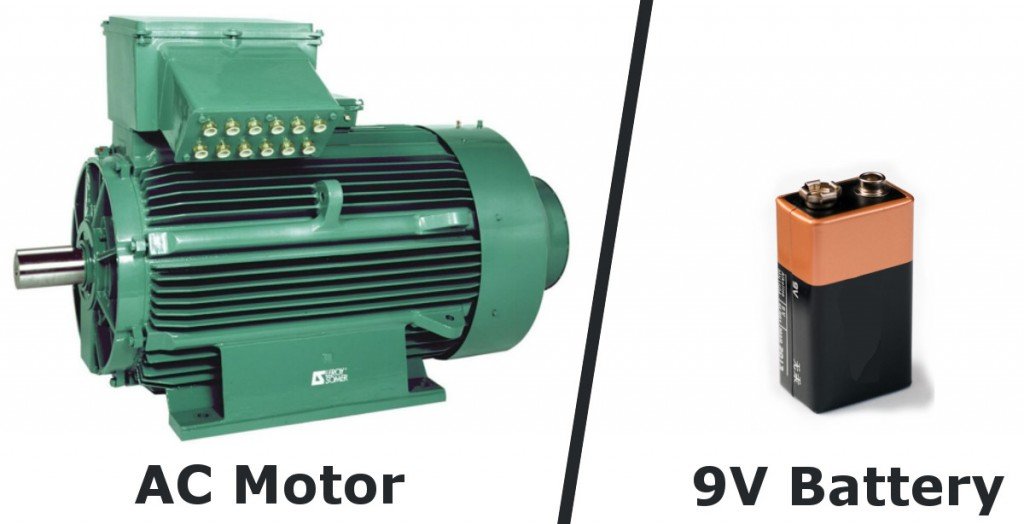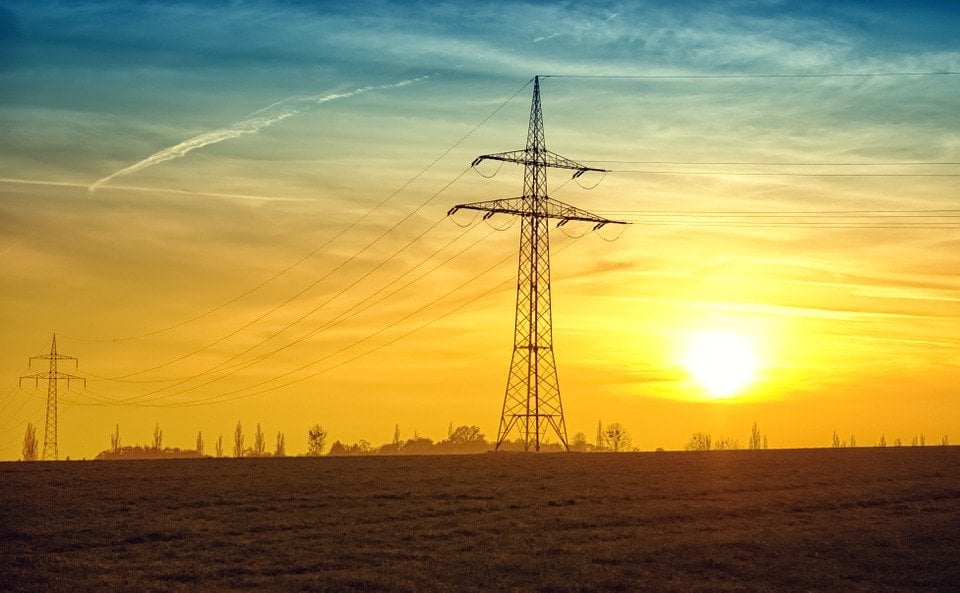The current (electric charge) only flows in one direction in case of DC (direct current). But in AC (Alternating current) electric charge changes direction periodically. Not only current but also the voltage reverses because of the change in the current flow.
The AC versus DC debate personifies the War of Currents, as it is now called, in which the two giants of electric power were embroiled in the late 1890s. Thomas Edison, the proprietor of Direct Current, was so threatened by Tesla’s invention that, in order to discredit Alternating Current, he resorted to falsely misleading Americans. Apprehensive about losing his royalties to this new technology, Edison went so far as to electrocute an elephant to show Alternating Currents’ fatal dangers.
However, this did not stop Tesla from fulfilling his dream of powering the United States with cheap and highly efficient energy. Even now, we see long and thick wires tightly strung between soaring electrical towers like the strings of a guitar. AC took over the throne and reigned for a century, dominating households, offices and buildings, until now, when DC seems to be gradually making a comeback. Why did AC fare so well? And why might DC make a comeback? Let’s rephrase these questions.
Why is AC better than DC?
Alternating current is a type of current in which the electrons periodically switch directions back and forth. It is based on the principles devised by Michael Faraday in 1832 when he illustrated his dynamo electric generator. Despite being so celebrated, DC exhibited a major problem — transmitting it over longer distances was really difficult. The wires lost power and had to be rejuvenated using additional circuitry. Furthermore, upgrading or downgrading DC voltages also required complicated circuits.
AC could not only be transmitted over long distances easily but could also be conveniently converted to higher or lower values using transformers. A transformer is essentially a coiled up wire that “steps up” or “steps down” the magnitude of AC voltage. The ability to transform voltage in this manner meant that it was possible to transmit electrical power much more efficiently, not only across cities, but across the entire nation. Tesla’s dream was gradually becoming a reality.
(Image Credit: Pixabay.com)
The ability to carry power across long distances was the most important advantage of AC over DC, regarding which houses and buildings discontinued DC power in the 19th century. In 1893, General Electric was chosen to power The Chicago World’s Fair with DC, which would cost an exorbitant $554,000. However, George Westinghouse intervened and promised to power the fair for only $399,000 with Tesla’s AC. Three years later, Niagara Falls Power Company, seduced by AC’s amenities, awarded Westinghouse the right to generate power from Niagara Falls and illuminate all of Buffalo, New York. AC obliterated DC once and for all. Then, a few decades later, the transistor was born.
Why is DC better than AC?
Unlike AC, a direct current undergoes no switching. There are no periods and the current flows in a single direction with a steady voltage. As already mentioned, DC is prone to lose power as heat – a characteristic that Edison exploited to light the first bulb. Despite its disadvantages, the age of semiconductors forced the return of DC. DC is predominantly used to power electronic devices, namely smaller devices that can only function on two states: on and off. This includes batteries, LEDs, transistors – the neurons of computer technology – and every other semiconductor device.
DC power has made a comeback due to our society’s reliance on computers, tablets and portable devices that are interfaced to “clouds” at all times. Clouds are basically computers, formally known as servers, that are stored in remote buildings to store your precious data. Now, firms like Facebook and Google empty entire buildings to accommodate servers that store data for their ever-increasing number of users. Manipulating AC like DC on such devices is quite complicated, as it requires elaborate circuits. However, most importantly, AC loses its energy, albeit, for an infinitesimal time, which is something that constantly power-hungry servers cannot endure.
Server rooms are usually air-conditioned and are devoted to the continuous operation of computer servers. (Image Source: Flickr)
Furthermore, every electrical engineer knows that losses accumulated by AC transmission can exceed the losses incurred by DC due to Skin Effect and capacitive coupling, phenomena where, because the energy flows on the wire’s surface, it is absorbed by objects beneath it. The transmission slows down due to these resistances, consequently diminishing its efficiency. In fact, the losses dispersed in its vicinity form the basis on which wireless power transfer mechanisms are structured. AC radiates some of its energy, which can be conveniently concentrated in a region by coiling the wire in a suitable way.
Another reason why – and this seems to be the most important – DC might return is its compatibility with environmentally friendly electronic devices. As all solar cells are based on semiconductor substrates, they all generate or operate on DC power. DC might have to return for the sake of renewable energy. Of course, we can recruit AC as well, but this would require tedious conversions from DC to AC using an inverter and then to DC again, where 5-20% of energy is lost as heat. In fact, data centers spanning whole acres do use these converters, but they not only consume huge amounts of energy, but there is also the additional cost of cooling systems for the heat generated, which exacerbates their financial plight.
So which is better, AC or DC?
Despite now having the technology to transmit DC over grids across long distances, we still persist to use AC. AC is pushed to higher voltages to overcome resistance, and when the power reaches the user, it is stepped down and rectified to power, for example, a computer. However, these technologies, like renewable technologies, not only cost a fortune, but their efficiency might also be questionable. Yes, DC provides stable outputs, but higher efficiency is achieved after eliminating losses.
Although the losses might be less than those incurred with AC, the step-up/down factor comes into play. The simplicity with which AC voltages can be modulated and transported is still unmatched, which is why AC might be still preferred. Both sources of power are excellent in their own ways, so determining who is triumphant would depend on the criteria under contention – the playing field. The judgment essentially relies on the application of the power.
Nowadays, both work in tandem. AC runs above us on wires, like the lines of an empty diary that terminate at your house. The AC voltage then is converted to DC with a rectifier, like the adaptor that your charger contains, to power household devices, such as bulbs, lamps and other appliances. The War of Currents might not be as dramatic as it once was, but it still subtly exists.
Reed the original article on Science ABC
Post time: Apr-24-2019



